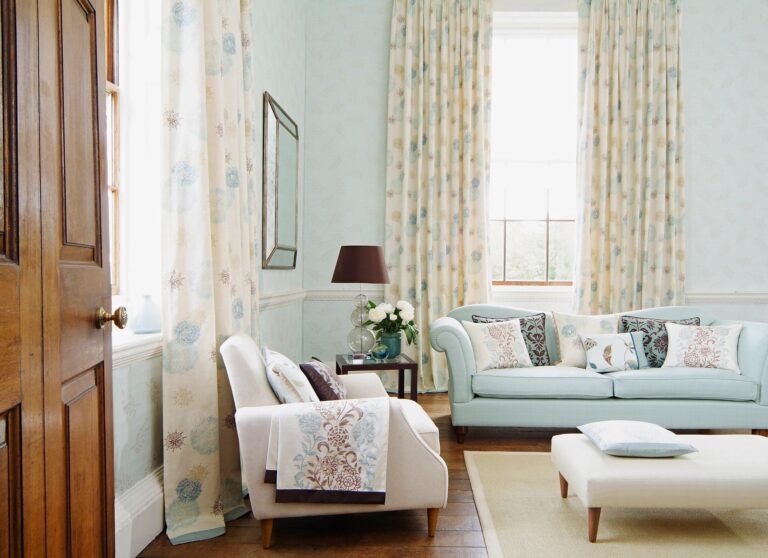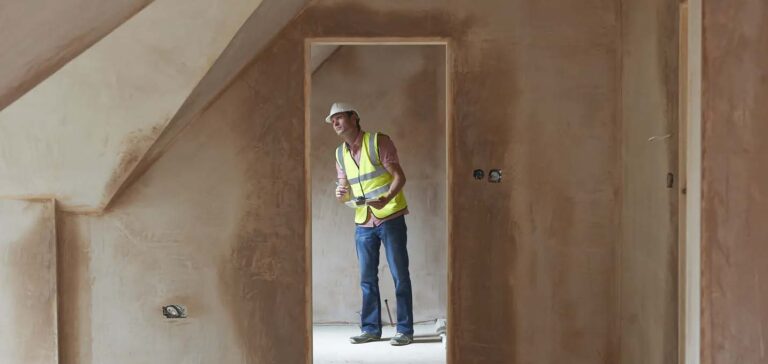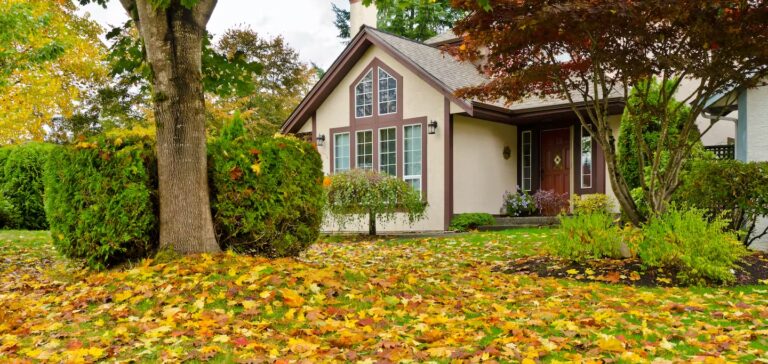Looking for a house with good bones? Your dog is, too. Here’s why some people are seeking out “barkitecture” to score their pet’s dream pad.
If you own a pet dog, there’s a good chance you’ve: swapped out words in your favorite song with their name, cancelled plans to spend time with them, and filled up your smart phone’s camera roll taking their picture. But, have you bought a home specifically for them?
While dogs aren’t the primary reason many pursue real estate opportunities, they are a factor plenty of homebuyers take into serious consideration during the house search process. This is especially true nowadays with pet ownership on the rise.
The COVID-19 pandemic – and the increased time people spend at home as a result – played a key role in the uptick of pet ownership in the U.S. From 2020 to 2021 alone, nearly one in five households acquired a cat or dog, according to the American Society for the Prevention of Cruelty to Animals (ASPCA).
“I do think more people have pets nowadays, but what’s noticeable is the focus on our pets and how they are becoming more involved in society. There are pet-specific cafes, bakeries, boutiques, and specialized food choices, as well as pet-friendly businesses and more,” says Joanne Thomas, an agent with RE/MAX Advantage Plus in Eagan, Minnesota, who is currently working with buyer clients seeking a home specifically for their dog.
In a small neighborhood of Denver, Colorado, for example, you can even spot pup parents stopping by a popular dog treat truck that serves goodies to its drooling patrons. With these cuddly canines having stolen the hearts of so many, it makes sense that plenty of people care deeply about their dog’s well-being at home, too.
Enter “barkitecture” – a popular pet-forward architecture trend where homeowners are making intuitive design choices that strike a balance between function and fabulous, all framed by the needs of their furry friends. The good news? These features are in demand when it’s time to sell the house. A growing number of dog owners looking to move are making pet-friendly features priority items on their list of home criteria.
From wanting a fenced-in yard to a barkitecture-inspired luxury pet spa, here are a few ways that today’s buyers are taking their dog’s needs into consideration when shopping for a new place to call home.
Ensuring proximity to outdoor enrichment
Having easy access to a green, grassy yard means a dog has increased opportunity for fresh air during the daytime and convenient potty breaks at nighttime. This factor makes a direct impact in one’s quality of life, for human and dog alike – and it’s a key characteristic many homebuyers are in search of.
The 2023 National Association of REALTORS® Profile of Homebuyers and Sellers revealed that 19% of all buyers between 2022 and 2023 saw outdoor space for a pet as an influential factor in their purchase, the same percentage as those who considered lot size and school district. Convenience to outdoor space for pets even topped the quantity of buyers considering factors like proximity to schools (18%), healthcare facilities (16%), and airports (9%).
Outdoor space isn’t just a yard – it can take the shape of other accessible ways to exercise outside.
“People looking to live in urban areas often find it especially important to make sure there’s ample sidewalks for walking the dogs,” says Donna Deaton, Manager of RE/MAX Victory + Affiliates in Liberty Township, Ohio.
Plus, those looking to live in multi-family dwellings have different factors to take into consideration.
“I am in Minnesota and winters can be cold! So, if buyers in my area aren’t looking for a single-family home and prefer the condo lifestyle instead, having a dog-run or dog relief area either covered or indoors is key. If this isn’t an option, then having some green space nearby for their dog to run and play is really important to buyers,” Thomas says.
Not skimping on a fence for safety
Many dog owners have a skilled escape artist on their hands – so a yard isn’t fully functional until it’s been securely enclosed.
“A fenced yard is usually the most requested feature for the dog owners I work with looking to buy a home,” says Ana Duarte Cole, an agent with RE/MAX Advantage in Waynesboro, Virginia.
Other agents agree that a fence is a high priority for many prospective homebuyers. Those who consider a home without a fence have a few extra steps to think about.
“Most of the time, yards with fences are a must have. But they’re not always a deal killer, especially for those who are willing to add in their own,” Deaton shares. “This is when it is important to really study the HOA (homeowners association) rules and regulations, if applicable, as some will not allow a fence or will allow only certain styles, colors, and heights of fences.”
Cost can also be a reason why homebuyers prefer to find a house with a fence already in place. The common types of fencing people choose for residential properties are wood, metal, vinyl, or composite. And the choice of fence type, as well as style and quantity of material needed, can cause price points to greatly differ. According to Forbes, the average cost of installing a new wood fence is roughly $3,300 – but on the upper end of their spectrum, some projects (particularly those on larger properties) can cost over $10,000.
Searching for elements of ‘barkitecture’ (and other design-forward features)
Barkitecture is all about space-savvy, oftentimes luxury features that make humans and dogs alike say (bow) wow. The concept stems from making necessary pet gear – like crates, beds, and kibble storage – blend more seamlessly into a home. For example, some kitchens come with a water bowl fill-up station close to the ground, as well as a hide-away feeding zone.
“A client of mine recently built a custom home and their laundry room has a dog shower. It features tile, pony walls and a hand-held shower wand. As a bonus, it is often used to wash off muddy boots in addition to puppy paws,” shares Rachele Maczuk, an agent with RE/MAX Today in New Haven, Missouri.
Deaton, who has plenty of experience in the new build market, has also seen an uptick of built-in dog spas.
“I notice features like this in newer and custom-built homes. For cleaning off muddy pets, homebuyers get excited if by chance the home has an actual dog wash station, or even just a full bath on the first floor. This isn’t necessarily a reason as to whether they purchase that particular home or not – but if the buyer is a pet owner, they see value in having it.”
Thomas agrees, too.
“Dedicated pet baths in homes, and custom cabinetry features to store their food and bowls, is becoming a more common sight to see. Plus, I continue to see kennels that are disguised as furniture,” she says.
Technology is also playing a role in pet well-being inside the home.
“I’ve shown homes where the buyers appreciate the fact that the pet door is automatic or sensored instead of those ones that flap as the pets wander in and out,” Deaton says. “These digital pet doors are a newer thing and are appealing to today’s tech-forward buyers. Some can also be opened and closed through an app on your smart phone.”
Aside from modernized, dog-forward home innovations, some homebuyers are focused on the overall layout of a home – especially those looking to accommodate older dogs.
“A recent client of mine wanted a one-level home with little to no steps to the backyard since their senior dog couldn’t do steps anymore,” Duarte Cole says. “After moving in, they actually replaced the previous owner’s newly installed carpet for vinyl flooring due to their dog having incontinence problems. They needed something easy to clean.”
Envisioning potential for paw-fection
Back to that whole “good bones” thing. Today’s homebuyers are often keeping a keen eye out for ways to make pet-friendly tweaks to their new place once they’ve moved in (like a fence, explained above).
Even if a home comes with a fence, certain buyers will choose to add in a dog window, giving their pet an entertaining view of passersby. Other tweaks might include adding interior pet gates, installing a central vacuum cleaning system, or even retrofitting a dog bedroom.
But something as simple as wall color is a factor people can plan around their dog’s preferences. And unless a prospective home boasts neutral wall colors, there’s a good chance buyers will want to make changes.
The American Animal Hospital Association shares how certain paint colors are more soothing than others to pets because of how their eyes process hues differently than humans. They note how animals are likely to be calmed by pale shades of blue, green and purple, as those colors aren’t distorted by their vision and promote tranquility. While these recommendations are geared toward wall color for animal hospitals, the same insight can apply to residential homes.
Who’s buying a home for their pet’s needs, anyway?
Homebuyers across all generations are taking interest in ways to encourage wellness for their pets around the house. But a rapidly growing portion of these pet owners-turned-homebuyers are millennials. According to the American Pet Products Association’s (APPA) National Pet Owners Survey, millennials are the largest cohort of pet owners in the U.S. And, as recently detailed by RE/MAX President and CEO Nick Bailey, at least 45 million millennials in the U.S. are a part of the ongoing pent-up demand for housing.
Subsequently, as more millennial homebuyers enter the market, it’s expected that yard space, fences, and barkitecture features alike could remain highly sought-after home elements – and even increase in popularity.
“Compared to previous markets, it seems that buyers are more vocal about the needs of their pets. Whether it is more of an acceptable social norm now or whether it is that buyers are truly more cognizant of the happiness of their four-legged family members is unclear,” Maczuk says.
“But ultimately, a home is a place that should bring its occupants joy,” she continues. “And whether they’re four-legged, feathered, or slithering, those pets are family members. When searching for a new home, it is important to find a place that fits the bill for the entire family.”
Article originally appeared on RE/MAX.com.








